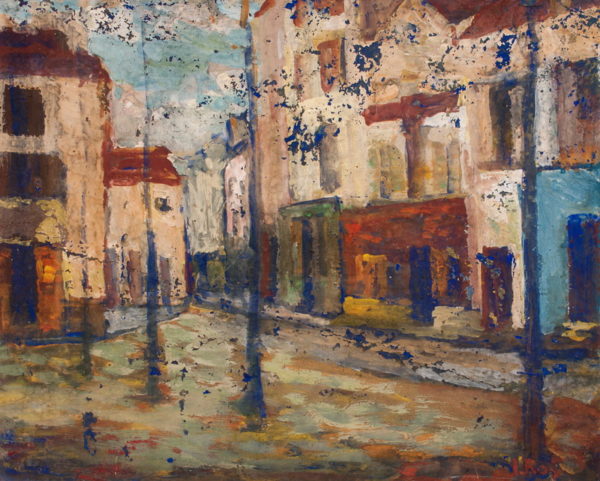Blogs
Inside/Outside: Spaces In Art
Shubhasree Purkayastha
Space is one of the seven elements of visual art and is the area in which an artwork is organised. It is the area within a work of art and can also include the area immediately outside and around a work of art. Learn about the portrayal of physical space in art, a consistent subject throughout history.
“Space is the breath of art.”
– Frank Lloyd Wright, American Architect
Space is one of the seven elements of visual art and is the area in which an artwork is organised. It is the area within a work of art and can also include the area immediately outside and around a work of art. Space is also the unlimited three-dimensional expanse in which all material objects are located, and the portrayal of physical space in art has been a consistent subject through history.
The way in which an indoor space is populated and designed can tell a lot about the occupant of that space – an idea which has been used variously in visual art through a range of mediums. For instance, in a photo-series by Dayanita Singh titled Family Photos, subjects from upper-middle class families are chosen from across cities of India and are shot in their residences. These staged photographs giving glimpses of the spaces the people live in are also portrayals of their affluence and family history. The socio-economic and cultural status of the subject is as much a theme of these photographs as the subjects themselves.

Ahona and Poppy, Calcutta, Dayanita Singh, 1998, Silver Gelatin Print
More than the indoor space, the exploration of the outdoors has been a wider and perhaps older theme in visual art. Creating art while being outdoors was a practice developed in the 18th century in France. It began as a concept of landscape painting where the artist would directly paint what he sees in front of him in situ within that landscape. It enabled the artist to better capture the changing details of weather and light. Creating in and representing the outdoors has evolved today to encompass other ideas such as that of a cityscape and the genre of street photography.

Street Scene, Jamini Roy, 1910, Tempera on Board
Another segment of using physical space in art is the exploration of ways in which the ideas of the in and out can be manipulated. Photographer Karen Knorr, for instance, comments on the social structures of upper-class Rajasthan through an exploration of space in a series of digitally-created images called India Song. In this series, animals and birds (especially those particular to the outdoors) are digitally placed inside luxurious rooms of palaces and mansions. She uses sites both sacred and secular to comment on issues of caste, class and femininity in Rajasthan.

The Queen’s Room, Zenana, Udaipur City Palace, Udaipur, Karen Knorr, 2010, Archival Pigment Print
Space has also been used by artists to distort reality (most commonly seen in the cubist art movement) or create entirely new ones (as in the surrealist movement). In a nod to the surrealist art movement, painter Arpita Singh creates works that transport the viewer to a dream-like, imaginary space. Not only are the borders between the in and the out blurred, figures and objects are also manipulated to invoke a sense of otherworldliness.

Manjit and Fil Talking, Arpita Singh, 1990, Acrylic on canvas
The concept of space manipulation to create imaginary realities is one that has been explored in the worlds of theatre, photography and cinema since a very long time. Elaborate backdrops or customised sets were common practice both in early photo studios and film-making. While the prevalence of photo studios is decreasing by the day, contemporary artists like Waswo X. Waswo continues to derive inspiration from its history. Waswo’s work is produced in his in-house studio. Here, the manipulation of space using hand-painted backdrops often takes centre stage in creating works that lean more towards the realm of fantasy and make-belief.

Swinger, Waswo X. Waswo, 2010, Pigment Print and Hand-coloured photograph
In contemporary art today, the idea of space has taken so many new forms that it cannot be simply limited to its antiquated definitions of relative placement and direction. As art is increasingly becoming more and more conceptual, rather than a plain representation of the visual world, space is more a product of our imagination and perception than a mere technique that can be ‘correctly’ taught in an art-class.








